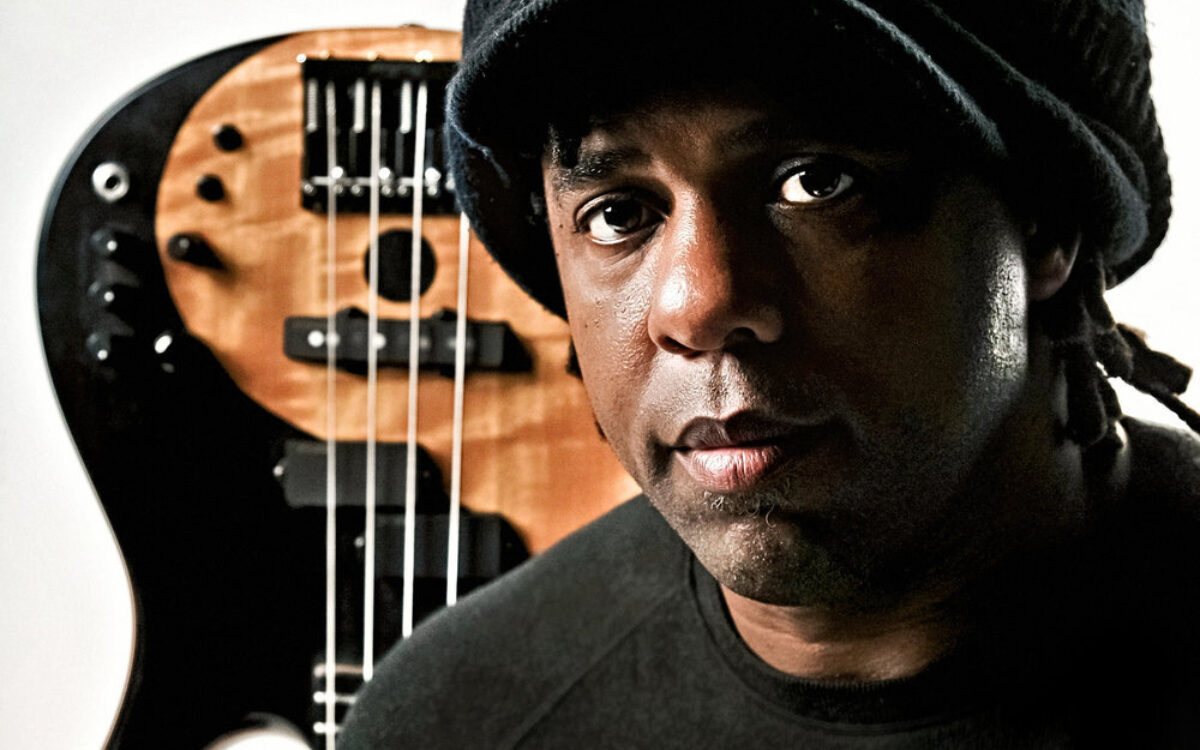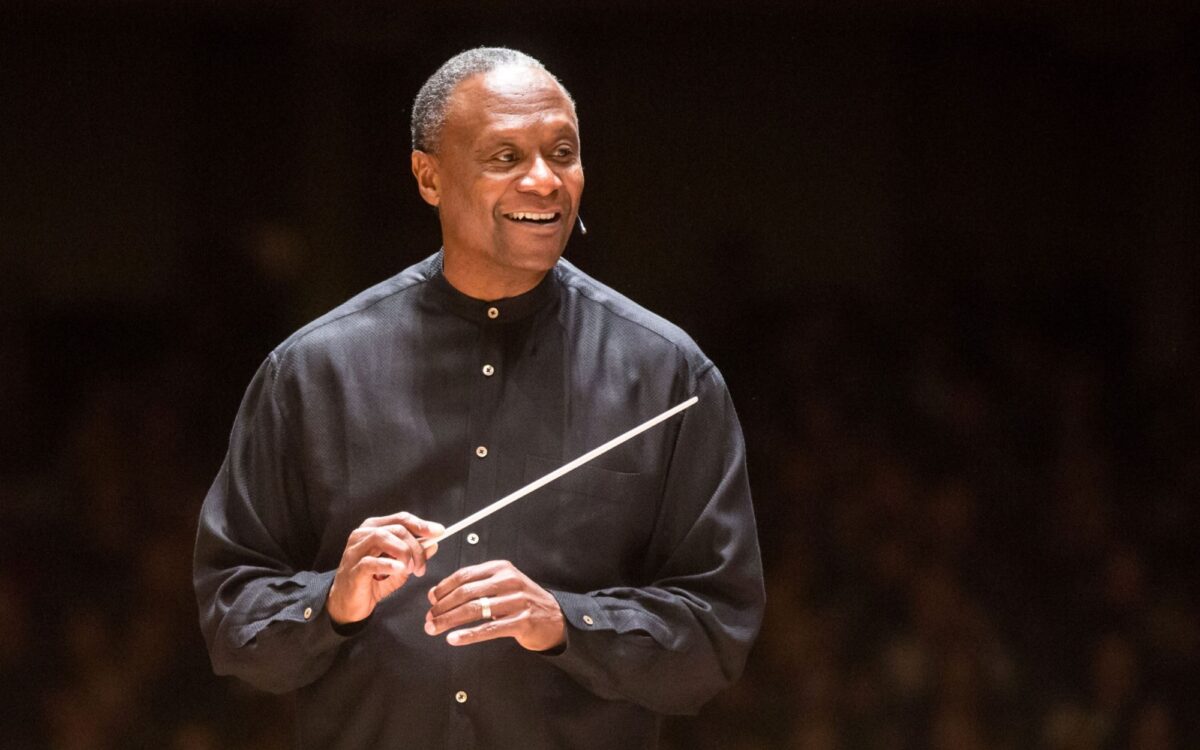Suite from The River
Edward Kennedy "Duke" Ellington was born in Washington, D.C., on April 29, 1899, and died in New York City on May 24, 1974. The specific commission for Ellington’s ballet score The River was a request from Lucia Chase, co-director of the American Ballet Theatre, to celebrate the company’s 30th anniversary. Ellington created sketches of the suite’s movements on piano and in the studio with his ensemble, conceiving a piece in twelve sections. For the ballet’s premiere, it was called a “work in progress”; choreographer Alvin Ailey set seven movements, arranged for orchestra by Ron Collier, for the first performance, which took place at Lincoln Center’s New York State Theater (now the David H. Koch Theater) on June 25, 1970.
The score for the suite from The River calls for 2 flutes (2nd doubling piccolo), 2 oboes (2nd doubling English horn), 2 clarinets, 2 bassoons, 4 horns, 3 trumpets, 3 trombones, tuba, timpani, 2 percussion (glockenspiel, xylophone, maracas, claves, drum kit), piano, harp, and strings (violins I and II, violas, cellos, and double basses).
From its beginnings, Duke Ellington’s music always belonged to the dance and vice versa. Even when his music found its way from the Cotton Club to Carnegie Hall and other temples of “established” art, its dance origins were still evident. Dance was also a significant element in his Sacred Concerts, those oratorio-like, staged, semi-liturgical events of the 1960s and ’70s. Although we might see big physical and philosophical differences among the improvised, off-the-cuff dancing of Cotton Club attendees, the stylizations of floor-show professionals, and the formalized world of classical ballet, it seems Ellington had no qualms about ignoring these artificial boundaries. This paralleled his philosophy of music, too—jazz was his language, but that language was neither “high” nor “low,” and could belong anywhere.
It was doubtless with the universality of his musical language in mind that Ellington created the jazz suite, the genre that defined his compositional interests for much of his life. He had already begun to create works pushing the structural and expressive limitations of blues and song by the end of the 1920s, when his orchestra was the Cotton Club’s house band. The club’s all-white patronage expected not only dance numbers but also music to fill an entire evening: transitional numbers, theatrical revues, overtures, and illustrative effects such as the evocative “jungle style” that Ellington, in the U.S. anyway, helped invent. Along with such song hits as Mood Indigo and Solitude were more extended numbers such as the seven-minute, multipart Creole Rhapsody (1931) and Diminuendo and Crescendo in Blue (1937). These were made possible, even necessary, by Ellington’s exploratory harmonic language and the flexibility and creativity of his players, who included the great saxophonist Johnny Hodges and later the composer, arranger, and pianist Billy Strayhorn. In parallel, Ellington and his band had begun appearing in films beginning in 1929, and in 1935 they produced the imaginative, through-composed ten-minute score for the film Symphony in Black: A Rhapsody of Negro Life. The band toured the U.S. and Europe, capitalizing on the worldwide fame of their recordings.
A measure of the public’s increasing awareness of the sophistication of jazz and its proponents was Benny Goodman’s famous 1938 concert at Carnegie Hall. Duke Ellington and his orchestra’s series of Carnegie Hall concerts in 1943 demonstrated the broad acceptance of jazz as an American artistic idiom and of Ellington’s work in particular. As if to underscore the point, Ellington created new, ambitious pieces for the venue that included the forty-five-minute, six-part Black, Brown, and Beige, among the largest of his conceptions. Comparable to a chain of highly characterized tone poems like the Czech composer Bedřich Smetana’s My Country, Ellington’s jazz suites nearly always had a narrative framework, sometimes outlined in prose as part of his compositional process. Although his 1970 score The River was conceived as music for a ballet, it fits wholly within his catalog of jazz suites in its variety, metaphorical openness, and spirituality. It stands as one of the masterpieces of his later years.
It was American Ballet Theatre’s co-founder and co-director Lucia Chase that brought Alvin Ailey and Duke Ellington together to collaborate on a work for the 30th anniversary of her company, which she started in 1939 with Oliver Smith. Ailey’s troupe, American Dance Theater, had been involved in the Chicago premiere of Ellington’s 1963 stage work My People, and Ailey admired the composer deeply. Ellington’s music was the basis for many of Ailey’s ballets, including Night Creature, and the American bicentennial work based on Black, Brown, and Beige. Growing out of an idea originally suggested by Ellington’s friend, the jazz historian Stanley Dance, The River came together relatively quickly but haphazardly once the concept was settled. It was Ellington’s mode of working to sketch pieces out on the piano for later assembly and refinement with his band in the studio and in performance. Ailey later reported that the score came to him piecemeal, and for the work’s premiere, he was only able to choreograph six of the twelve conceived numbers, though he later expanded it. In keeping with Ellington’s practice that “the composer should never be the arranger,” he enlisted Ron Collier to create the score for a small orchestra suitable for a ballet performance. At the June 25, 1970, premiere, The River ballet was referred to as “in progress,” though that did nothing to dim critical admiration for the piece. The principal solo dancers for the original production were John Prinz in Spring; Eleanor D’Antuono in Vortex; Richard Cammack, William Carter, Robert Gladstein, and Vane Vest in Falls (not played in these concerts), Cynthia Gregory, and Ivan Nagy in Lake; Dennis Nahat in Riba (also omitted from these performances), and Sallie Wilson and Keith Lee as the white girl and the black boy who fall in love in Twin Cities, represented here by one of the “cities,” Village of the Virgins (the other being The Neo-Hip-Hot Cool-Kiddies Community on the river’s opposite bank).
Ellington’s overarching spiritual metaphor for the piece saw the river, flowing from its source to the sea, as a parallel to a person’s life, as is made clear in his own prose sketch of the piece. In the complete sketch, he speaks of the river’s ultimate emptying into the sea as representing HEAVENLY ANTICIPATION OF REBIRTH. In reprising the Spring movement as the last of the twelve-movement original version of the piece, he posits death and birth as the transitional stage of the cycle of life.
Ellington’s prose sketch for The River is excerpted below.
Robert Kirzinger
Composer and writer Robert Kirzinger is the BSO’s Director of Program Publications.
In his memoir Music Is My Mistress, Duke Ellington provided a description of the symbolism and imagery behind his original, twelve-part conception of The River. The below reflects the six movements performed in these concerts from the now-standard eight-movement orchestral suite. A bracketed ellipse […] indicates a paragraph omitted from Ellington’s text.
The River starts as…
THE SPRING, which is like a newborn baby. He’s in his cradle…spouting, spinning, wiggling, gurgling, squirming, squealing, making faces, reaching for his nipple or bottle, turning, tossing, and tinkling all over the place. When he hits the floor the first time out of the cradle, he is about to go into…[…]
THE MEANDER, where he is undecided whether to go back to the cradle or pursue his quest in the wake of the big bubble. There he is, rolling around from one side to the other on the floor, up and down, back and forth, until he sees the door, the kitchen door, and looks out into that big backyard. “This must be the biggest world in the world,” he says. “Look at all that space out there!” So he dashes out the door, and now he is into…
THE GIGGLING RAPIDS, and he races and runs and dances and skips and trips all over the backyard until, exhausted, he relaxes and rolls down to…
THE LAKE. The lake is beautiful and serene. It is all horizontal lines that offer up unrippled reflections. There it is, in all its beauty, God-made and untouched, until people come—people who are god-made and terribly touched by the beauty of the lake. They, in their admiration for it, begin to discover new facets of compatibility in each other, and as a romantic viewpoint develops, they indulge themselves. The whole situation compounds itself into an emotional violence that is even greater than that of the violence of the vortex to come. The lake supports them until, suddenly, they are over the top and down…[…]
THE WHIRLPOOL [THE VORTEX] itself, an experience in which, of course, you must really immerse yourself to appreciate the hazards. From the whirlpool we get into the main train of…[…]
[…]
THE VILLAGE OF THE VIRGINS, whose riparian rights are most carefully preserved. The river passes between these two cities and goes plunging into…[THE MOTHER, HER MAJESTY THE SEA…]
Duke Ellington (From Music Is My Mistress, 1973, Da Capo Press, New York City)


